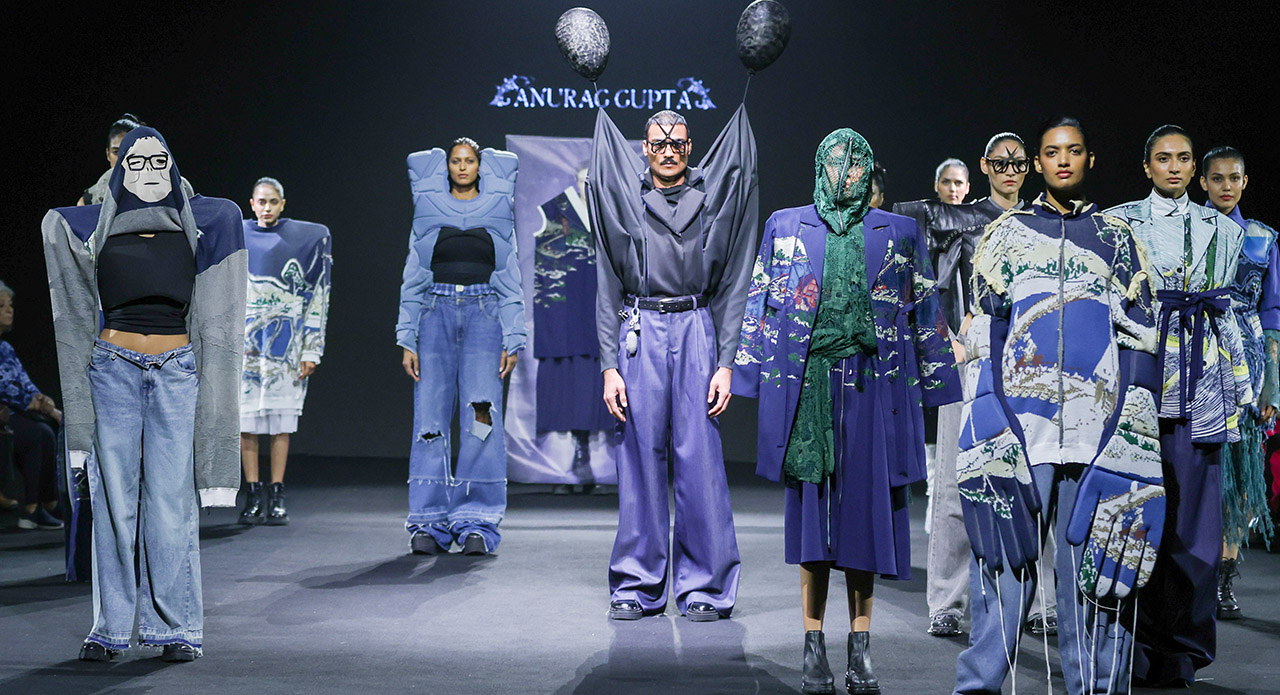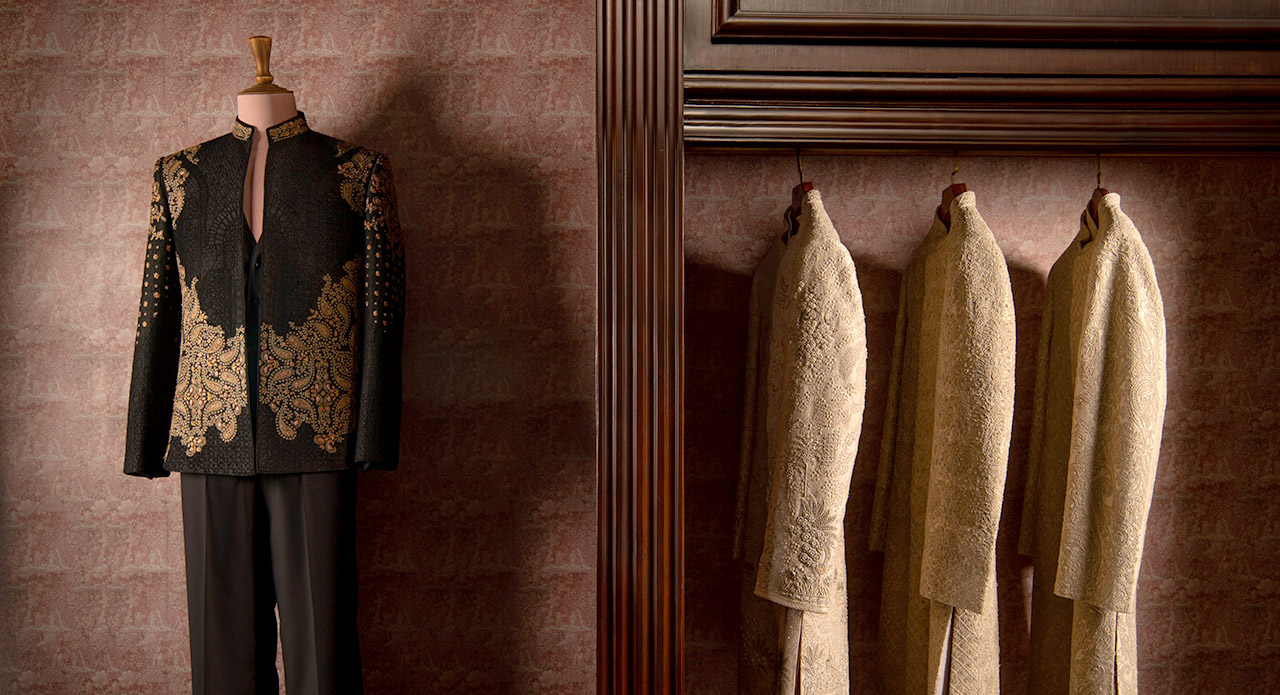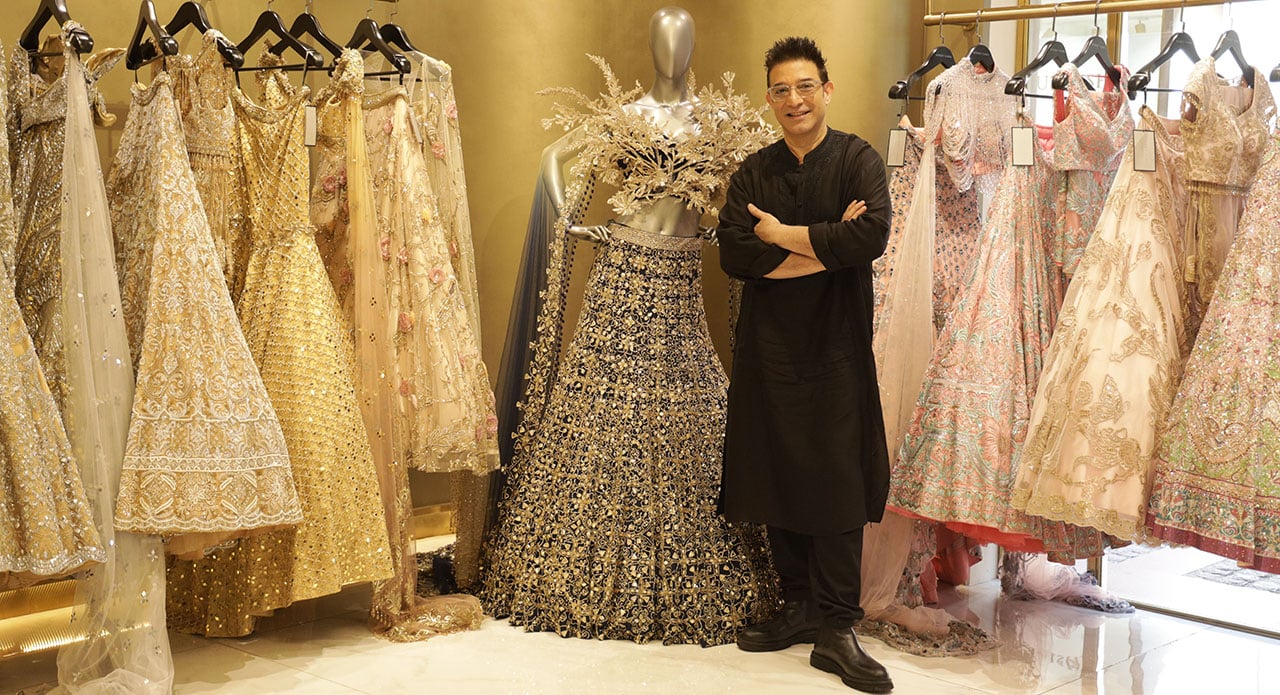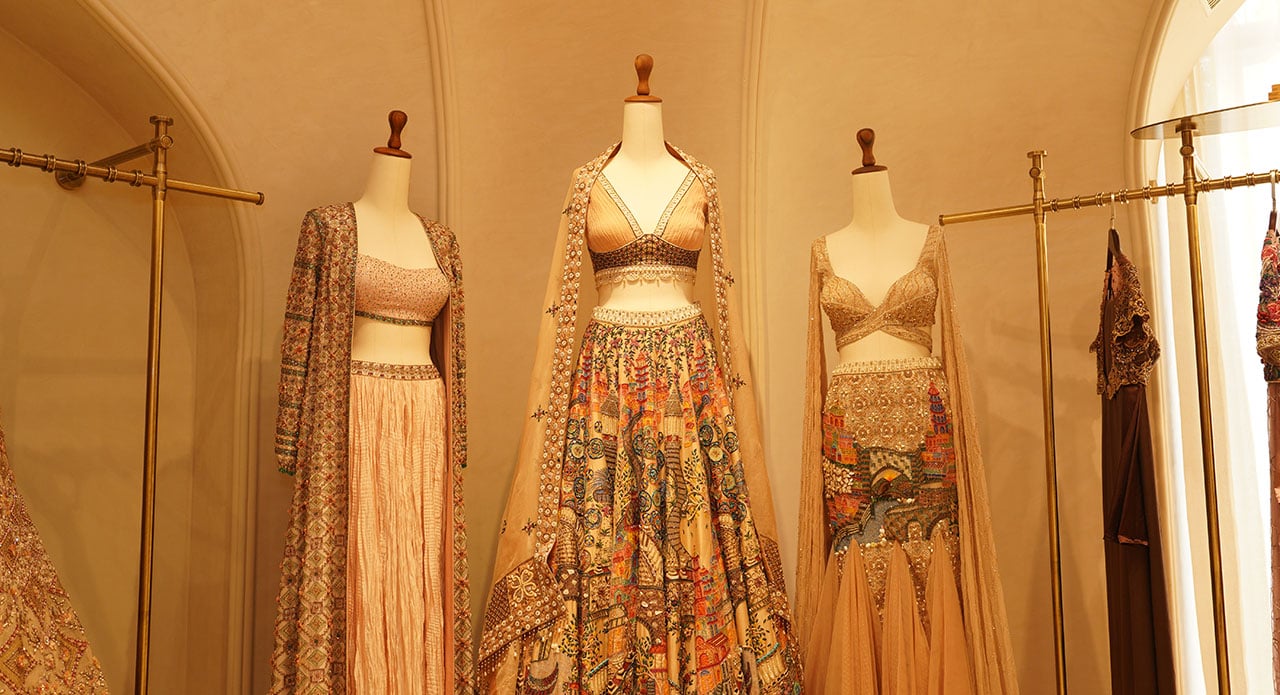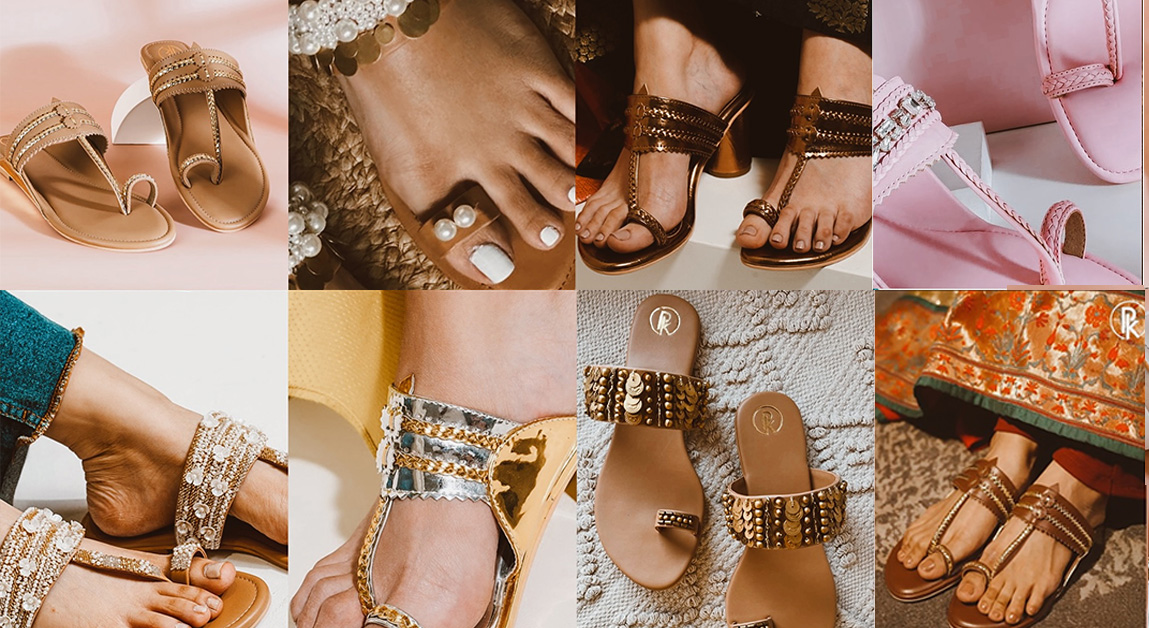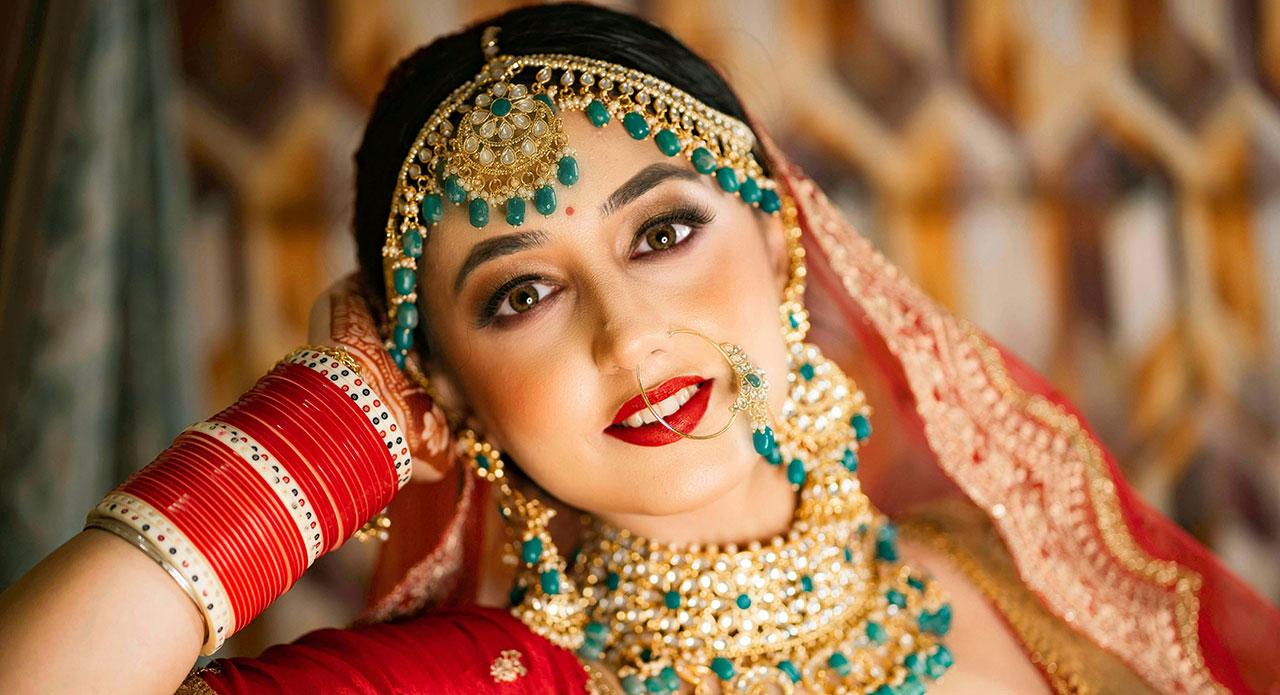On Day 3 of Lakmē Fashion Week in partnership with FDCI, we gathered at 1pm for designer Anurag Gupta’s showcase. Lights dimmed, and a playlist featuring eerie laughter of street-side kids melded with haunting Japanese soundscape giving us chills. The stage set then zeroed in on a figurine(model) encased in an envelope-shaped structure. She was adorned with fluid Japanese-inspired silhouettes featuring the works of famous artist Katsushika Hokusai, known for his iconic prints of Japanese sea waves and landscapes such as The Great Wave off Kanagawa.
The figurine encapsulated the moodboard of Anurag Gupta’s new collection ‘Ode to Hokusai’ defined by post-apocalyptic fashion, sculptural silhouettes, prints with stunning landscapes, sharp tailoring and eco-friendly experimentations with the world’s first 100% indigo-dyed wool denim.
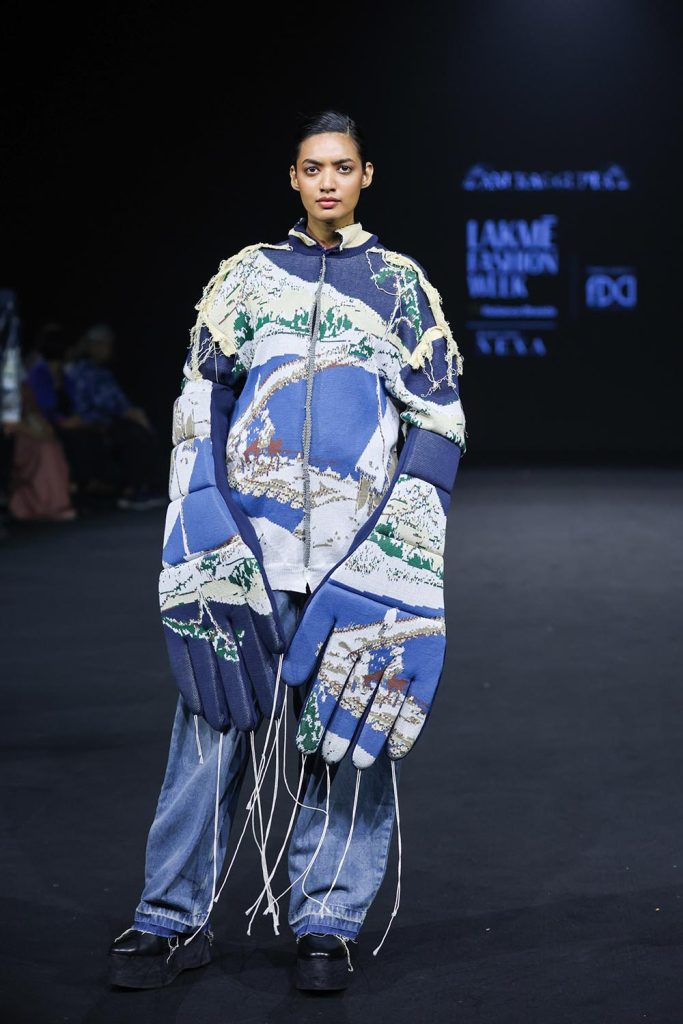
The Lakme Fashion Week runway unfolded like a warning. Gupta’s ensembles triggered a quiet eco-anxiety, a reminder of the fragile balance between human ambition and nature’s might. It was also a tribute to Hokusai’s philosophy, where humans exist within nature, never above it. Soon, models appeared in exaggerated puffed-shoulder tops paired with shredded jeans, face coverings with military-cut jackets, voluminous blazers with balloon ends on fingers, fluid short dresses balanced with combat boots, and oversized shirts with dramatic silhouettes. The ensembles screamed radical self-expression, an idea that has fascinated the GenNext 2018 alumni through all his collections.
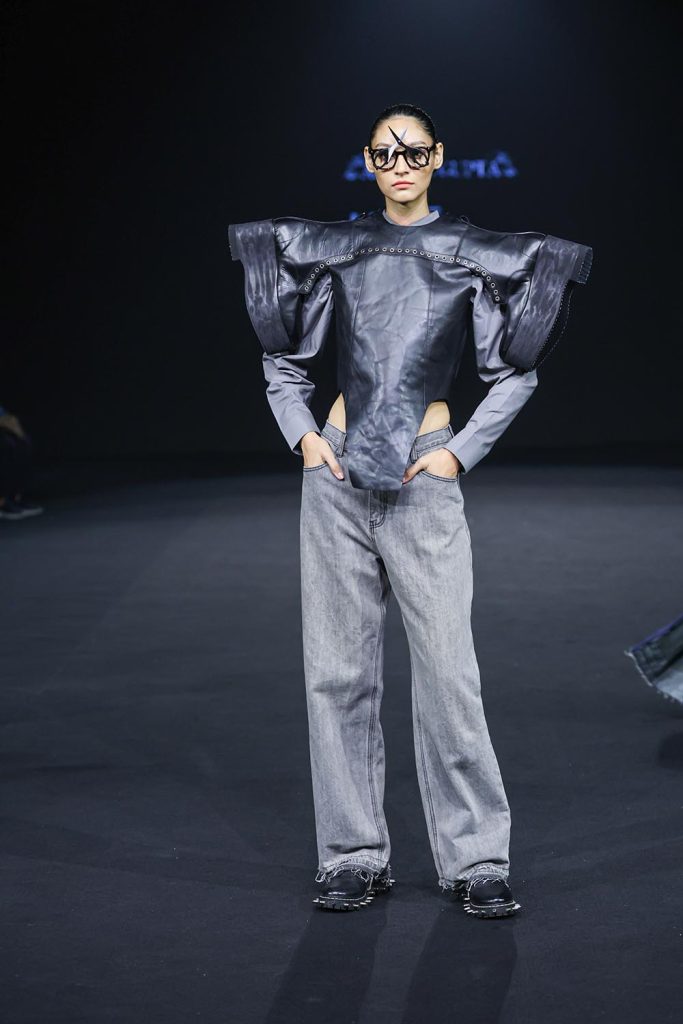
We speak to Gupta, a NIIFT, Mohali graduate, post show, on how he was inspired by the strength and rhythm of Hokusai’s art, experiments with indigo-dyed wool denim and why he calls himself a “responsible citizen.”
Q: How did artist Hokusai become the inspiration for your LFW collection?
I’ve always admired Japanese art, craft, and paintings, and Hokusai’s work has stood out to me for a long time. One day, the idea of exploring a Japanese artist felt like the right direction, and my research naturally led me back to him. His artistry has inspired me from the very beginning. His visual language became the starting point for the entire collection.
Also Read: “Fashion Can Be Fleeting, While Style Is An Enduring Statement”: Ujjwal Dubey
Q: What made you collaborate with IIT Delhi and IndigoTex and how each of them brought in their expertise to the making of ‘Ode to Hokusai’?
I’ve always been a very technical and experimental designer. I don’t follow the traditional route of hand embroidery or craft-heavy methods — my work is rooted in digital processes, precision, and machine techniques. Both my surfaces and silhouettes rely on technology. During my research, I came across IIT Delhi’s textile innovations, and that led to discussions, meetings, and eventually this collaboration. Their technological research and IndigoTex’s expertise aligned perfectly with my vision, allowing us to push boundaries in both fabric development and construction.
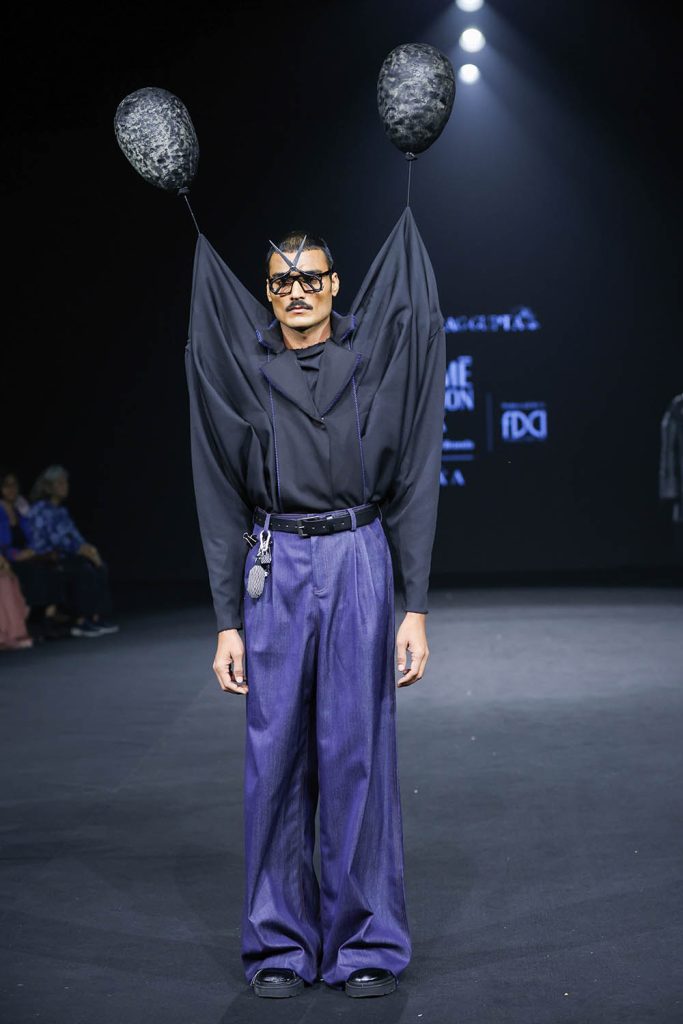
Q: Tell us about the fabrics, colour palette and motifs in the collection.
We drew directly from Hokusai’s paintings to create the textile story. The collection features intricate jacquard developments, artisanal engineered knits, and detailed appliqué techniques. The idea was to translate his artwork into modern surfaces that still carry a sense of craft and depth.
Q: What are your favourite pieces in the collection?
Honestly, I like every look, but if I had to choose one, it would be the Hokusai embroidered jacket paired with the Angoor tie. It captures the mood of the collection perfectly.
Also Read: Lakmē Fashion Week X FDCI: Siddhartha Bansal Brings A World Of Wonder With Paradise City
Q: Tell us more about IndoWool denim — are you experimenting with it for the first time? What qualities does it lends to the ensembles?
Yes, this is our first time working with IndoWool denim, and it’s been an exciting experiment. The fabric combines the strength and structure of denim with the softness and warmth of merino wool, giving the garments a unique texture and drape. It’s also sustainable and biodegradable, crafted by skilled artisans from Dharamshala, which makes each piece not only innovative but also socially conscious.
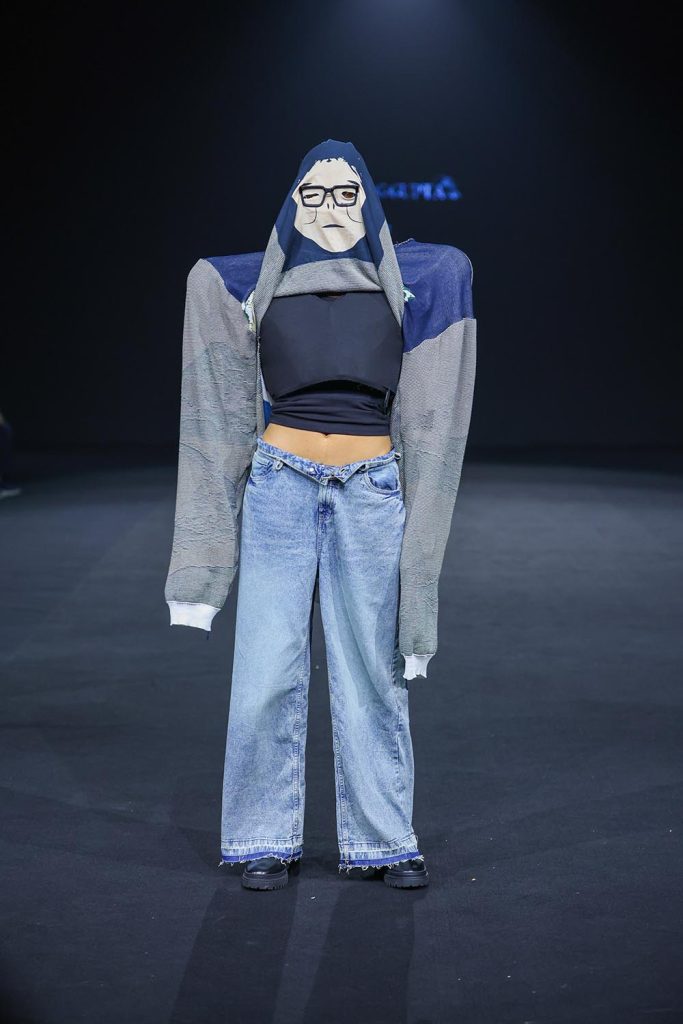
Q: Do you think India is ready for such experimental clothing?
Definitely. Indians today are very fashion-forward and have strong style sensibilities. The fact that people are buying and appreciating my work shows that the market is ready — it always has been. The gap was that not many designers were creating in this experimental space earlier.
Q: On that note, any unexpectedly pleasant feedback that you got for any of your designs?
One moment that really stood out was when Anamika Khanna told me she loved the collection and wanted to own several pieces — it was incredibly special to hear that. Manish Malhotra also mentioned that he sees my work on an international platform, which was both motivating and affirming. Feedback like this is truly encouraging and inspires me to keep pushing creative boundaries.
Q: Why is fashion a means of revolution for you? Would you call yourself an activist?
I wouldn’t call myself an activist — I see myself as a responsible citizen. There are subjects the media doesn’t always highlight, and fashion can be a powerful way to bring those stories forward. For example, one of my shows spoke about manual scavenging — it’s an issue people rarely discuss, but through fashion, it created a conversation. My personal journey plays a huge role in this. I grew up in a village where I witnessed domestic violence closely. I didn’t have access to proper education, and I knew I didn’t want my life to be confined to that environment. I had to fight hard to change my circumstances, and that struggle shaped my perspective. It made me bold — and that reflects in my work.
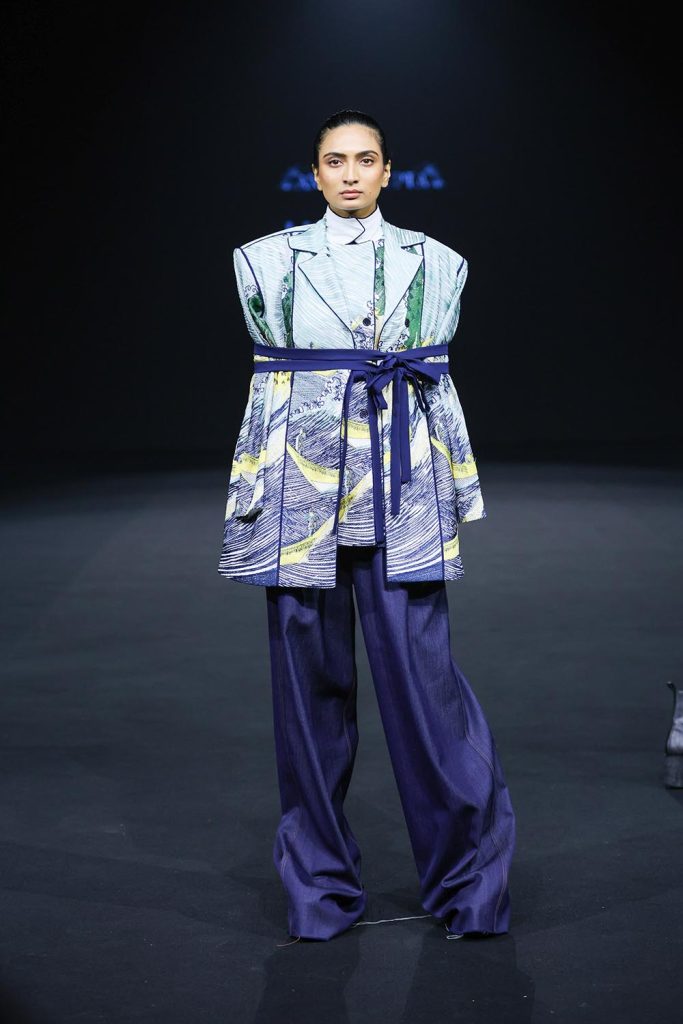
Q: What’s next for the brand Anurag Gupta after LFW?
A short break is definitely on the cards after the show. Beyond that, the focus will be on taking the Indiwool collaboration to international platforms and showcasing the potential of Indian wool through a contemporary design lens. It’s an exciting opportunity to bring innovative Indian textiles to a global stage while staying true to our aesthetic.
